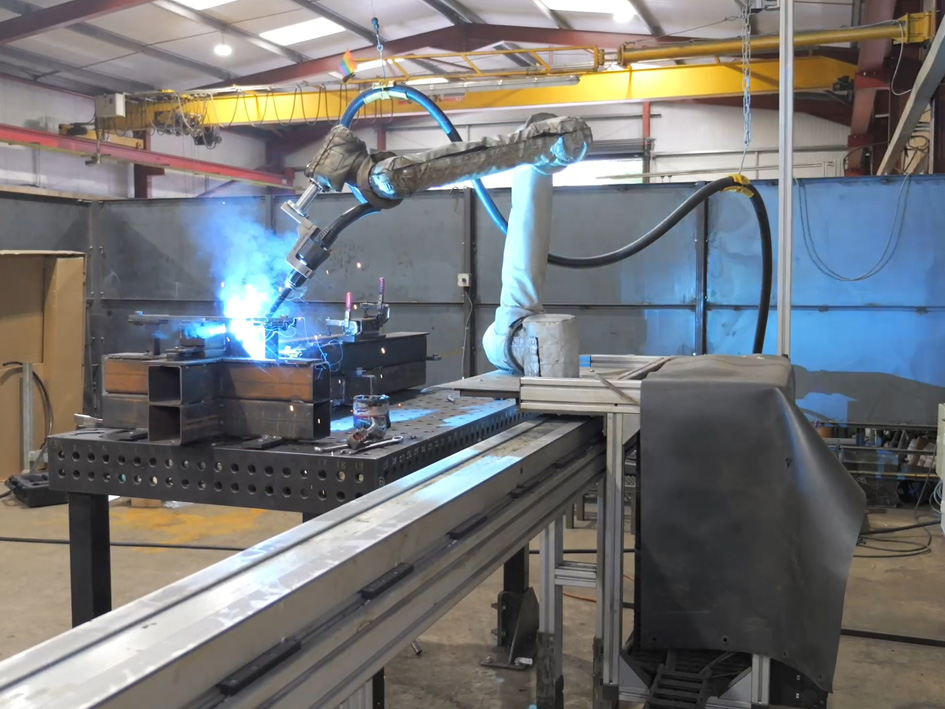Choosing the Right Welding Method
Welding is fundamental to modern manufacturing.
From structural engineering to electronics assembly, the right welding process can define the quality and efficiency of your entire operation.
But how do you choose between laser welding and traditional welding methods?
This guide explains the key differences between each approach and helps you decide which method, and which partner, can deliver the results your application demands.
At Olympus Technologies, we specialise in supplying both traditional and laser welding equipment, including integrated robotic welding systems for high-precision, high-efficiency applications.
What Is Traditional Arc Welding?
Traditional Welding Methods Explained
Arc welding remains one of the most widely used welding techniques in manufacturing and repair industries. Common types include:
- Shielded metal arc welding (SMAW), ideal for fieldwork and heavy-duty repairs.
- Gas metal arc welding (GMAW), also known as MIG welding, which is common in fabrication shops and production lines.
- Gas tungsten arc welding (GTAW) or TIG welding, preferred when ultra-clean weld quality is essential.
These methods rely on an electric arc to heat the metal components, often using a filler material and shielding gas to protect the weld zone.
How Arc Welding Works
The arc welding process involves forming a high temperature arc between an electrode and the workpiece, generating a weld pool. As the molten material solidifies, it forms a strong joint. Techniques vary depending on whether you're using a non consumable tungsten electrode (as in TIG) or a continuously fed consumable electrode (as in MIG).
Pros and Cons of Arc Welding
- ✅ Cost-effective equipment and flexible usage.
- ✅ Suited to thicker materials and outdoor welding work.
- ❌ Greater risk of thermal distortion.
- ❌ Heavily dependent on operator skill for consistent welds.
What Is Laser Welding?
How Laser Welding Works
Laser welding uses a concentrated laser beam - typically delivered via lenses or flexible optical fibres - to generate a small, intense weld pool. This method is ideal for thin materials, fine detail, and high-volume runs. The result: strong, clean, and precise welds with minimal spatter or warping.
At Olympus Technologies, we offer state-of-the-art laser welding equipment, including automated systems designed for precision welding services across demanding industries like automotive manufacturing, aerospace, and electronics.
Laser Welding Applications
Laser welding is used where precision, repeatability, and low thermal input are essential. Our systems support:
- Micro-welding for electronic components.
- High-speed robotic welding on production lines.
- Custom welding head integration into automated cells.
With Olympus Technologies, you’re not just investing in hardware - you’re choosing a full-service partner with expertise in laser beam welding, integration, and aftercare.
Pros and Cons of Laser Welding
- ✅ Low distortion and superior finish.
- ✅ Optimised for speed, accuracy, and automation.
- ❌ Higher initial investment in equipment and training.
- ❌ Less ideal for very thick or poorly prepared materials.
Head-to-Head Comparison: Laser vs Arc Welding
1. Weld Quality and Precision
Laser welding enables precise control over welding parameters, which is critical for achieving consistent weld quality. Our systems deliver pinpoint accuracy thanks to high intensity laser beam technology.
By contrast, arc welding differs in output depending on operator technique, environment, and material conditions.
2. Speed and Efficiency
Laser systems from Olympus Technologies dramatically reduce cycle time and improve throughput, especially in repetitive or automated tasks. Traditional arc welding work, though effective, is generally slower and labour-intensive.
3. Equipment and Operational Costs
| Aspect | Arc Welding | Laser Welding (Olympus Tech) |
|---|---|---|
| Equipment Cost | Low upfront | Higher upfront, lower long-term |
| Operation Cost | Manual-intensive | Automated, lower labour dependency |
| Training Requirement | Basic to moderate | Advanced, but supported by OT team |
While laser systems have higher acquisition costs, Olympus Technologies provides training, technical support, and tailored integration to maximise ROI over time.
4. Flexibility and Ease of Use
Arc welding remains more forgiving in difficult field environments. However, laser systems offer unmatched consistency when integrated with automation—especially for spot welding, repeatable tasks, and safety-critical joints.
5. Strength and Durability
With faster cooling and smaller weld pools, laser welds tend to have fewer inclusions and higher fatigue resistance. Our technology supports both standard and advanced laser power configurations for high quality welds across various materials.
When to Use Each Method
Choose traditional arc welding for:
- Low-budget repair or construction work.
- Applications involving stick welding or structural steel.
- Scenarios where setup time and simplicity matter most.
Choose laser welding from Olympus Technologies for:
- Tight-tolerance production work with thin materials.
- Complex components needing precise welds.
- High-speed, scalable manufacturing with low post-processing needs.
Final Thoughts: Why Choose Olympus Technologies?
When comparing welding vs welding, it’s not just about the process - it’s about the partner. At Olympus Technologies, we offer not only the latest in laser welding equipment and integration, but also deep experience across arc welding, resistance welding, and automated welding solutions.
Whether you're scaling up your production line or exploring other welding techniques for a new application, our team is here to guide you - from concept to commission. Let us help you unlock faster, stronger, and more efficient welding operations.














